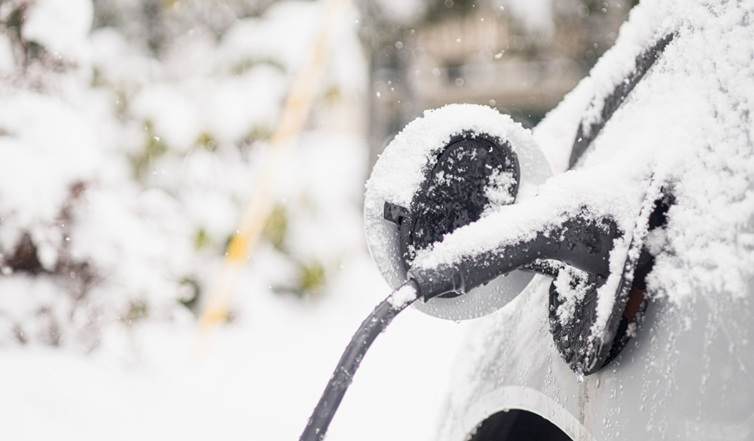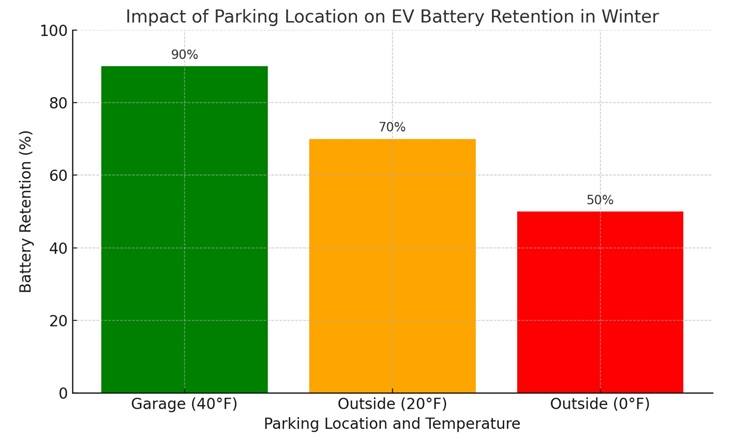As winter sets in, driving an electric vehicle (EV) in colder climates presents unique challenges. Whether you’re a seasoned EV owner or navigating your first winter with an electric car, there are simple yet effective strategies to get the best performance and range. Here are expert tips from Richard Reina, Product Training Director at CARiD.com, and Casey Donahue, CEO of Optiwatt, to help you prepare.

1. Park in a Garage if Possible
One of the easiest ways to protect your EV from harsh winter conditions is to park it in a garage. Even an unheated garage provides some insulation from extreme cold. Richard Reina explains that “a temperature difference of just a few degrees can help your EV’s battery hold its charge longer. Cold temperatures reduce battery range, so every little bit helps.”

2. Schedule Your Departure Time
Planning your trips in advance can significantly improve your EV’s performance. Casey Donahue advises using scheduling tools to precondition your vehicle: “Scheduling your departure gives the battery time to warm up and charge fully. Apps like Optiwatt can handle this for you, ensuring the car is ready to go when you need it.” Preconditioning before departure ensures maximum efficiency, even in the coldest weather.
3. Precondition the Battery Before Charging
Cold batteries can drain faster and negatively impact performance, including regenerative braking. To counter this, precondition your EV before charging. “Warming up your EV, just like you would with a traditional car, improves range and allows regenerative braking to function efficiently,” says Donahue. This simple step can make a big difference in how far you can drive on a single charge.
4. Strategic Charging Habits
Cold weather can reduce your EV’s range by as much as 30%. To combat this, Richard Reina suggests charging overnight if you have access to home charging: “Start your day with a full charge to maximize range. If possible, park in a covered structure to protect your car from the elements.” Keeping the battery topped up is a smart way to ensure you’re not caught short on range during the winter.
5. Use Eco Mode and Limit Energy-Intensive Features
Most EVs have an Eco Mode designed to conserve battery life by limiting power output and reducing energy consumption. Richard Reina highlights that “Eco Mode helps boost your EV’s range by prioritizing efficiency over performance. Consider also turning down the heating system a few degrees or using heated seats instead, as they consume less energy.” Combining these adjustments can stretch your range during winter drives.
6. Perform Essential Winter Prep
Basic car maintenance applies to EVs too. Remove unnecessary weight, inflate tires to the recommended pressure, and drive at steady speeds to maximize range. Reina emphasizes the importance of understanding your EV’s range meter: “It provides valuable insights into how your driving habits impact efficiency. Slower acceleration and consistent speeds are key to getting the most out of your EV.”
7. Plan for Public Charging
Winter can lead to crowded public charging stations, especially during holidays. Donahue advises, “Plan your route ahead of time and locate charging sites with plenty of stations. Having a backup plan ensures you won’t be left stranded.”
8. Prepare for Worst-Case Weather Scenarios
Long trips or adverse weather conditions require extra preparation. Reina recommends packing essentials such as:
- Warm clothes and blankets
- Non-perishable food and water
- A fully charged cell phone and portable charger
- A small shovel for emergencies
Additionally, familiarize yourself with charging stations along your route and check weather advisories frequently. “Charging your car to full before a storm hits can be a lifesaver,” says Donahue.
9. Maximize Regenerative Braking
To optimize energy recovery through regenerative braking, adopt a smoother driving style. Drive Electric Vermont advises: “Accelerate and brake gradually, anticipate stoplights, and ease off the accelerator when cresting hills. This helps redirect energy back into the battery rather than wasting it with mechanical brakes.”
10. Prepare for Power Outages
Winter storms can cause unexpected power outages. If you live in an area prone to blackouts, keep your EV’s battery as full as possible. Donahue recommends being proactive: “Charge your vehicle whenever possible, especially when severe weather is forecasted.”
Driving an EV in winter requires thoughtful planning, but these strategies can help you stay safe and efficient on the road. From preconditioning your battery to planning for worst-case scenarios, small adjustments make a big difference. Do you have your own winter EV tips? Share them in the comments below! By learning and sharing, we can all enjoy the benefits of EVs, no matter the weather.
Related Post
